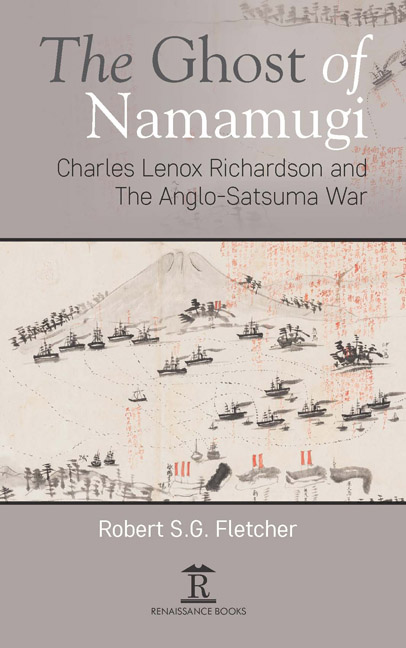2 - The British Empire and Bakumatsu Japan, 1862–1863
Published online by Cambridge University Press: 30 April 2022
Summary
What instinct is it which has brought wealthy England, from her sea-girt isles, into an attitude of hostility with opulent Japan, also bulwarked by the ocean? Two continents divide the children of either group of islands, and yet, in the nineteenth century, they are face to face amid the roar of artillery.
China Mail(1863)SHORTLY AFTER NOON on 15 August 1863, batteries along the shoreline of Kagoshima opened fire on a British naval squadron arranged around the bay. They had caught them at anchor. The flagship Euryalus was soon enveloped in an exchange of fire so intense that old hands likened it to the siege of Sebastopol. Her Captain and Commander, both standing alongside their Admiral, were killed on the bridge by the same shot. As the ship hurriedly cleared for action and commenced shelling the town (starting a blaze that would rage for days), her band struck up the popular tune: Oh, Dear, What Can the Matter Be?
The answer to that question is deceptively straightforward, and was set out at the time by Britain's Chargé d’Affaires in Japan, Colonel Edward Neale, in a note penned while at anchor off Kagoshima. The attack on Richardson's party at Namamugi, eleven months before, was ‘an unprovoked outrage’ that had ‘filled with great and just indignation the British Government and people’. It warranted a punitive indemnity, financial compensation, and the execution of the chief perpetrators. After months of delay, the bakufu had finally done its part, delivering £100,000 to the British Consulate in Yokohama. But Satsuma continued to hold out. Now Neale had brought a British squadron to Kagoshima to deliver a final ultimatum, only to encounter further equivocation. ‘The formal reply of the Prince of Satsuma… has now reached me’, Neale informed Admiral Kuper on the 14th:
a communication in every respect evasive of the point at issue, as confirming rather than repudiating the outrage for which redress has been long sought … Under these circumstances, I have the honour to request you to enter upon such measures of coercion, by reprisals or otherwise, as you may deem expedient and best calculated to awaken the Prince of Satsuma to a sense of the serious nature of the determinations which have brought Her Majesty's squadron to this anchorage.
- Type
- Chapter
- Information
- The Ghost of NamamugiCharles Lenox Richardson and the Anglo-Satsuma War, pp. 28 - 47Publisher: Amsterdam University PressPrint publication year: 2019



